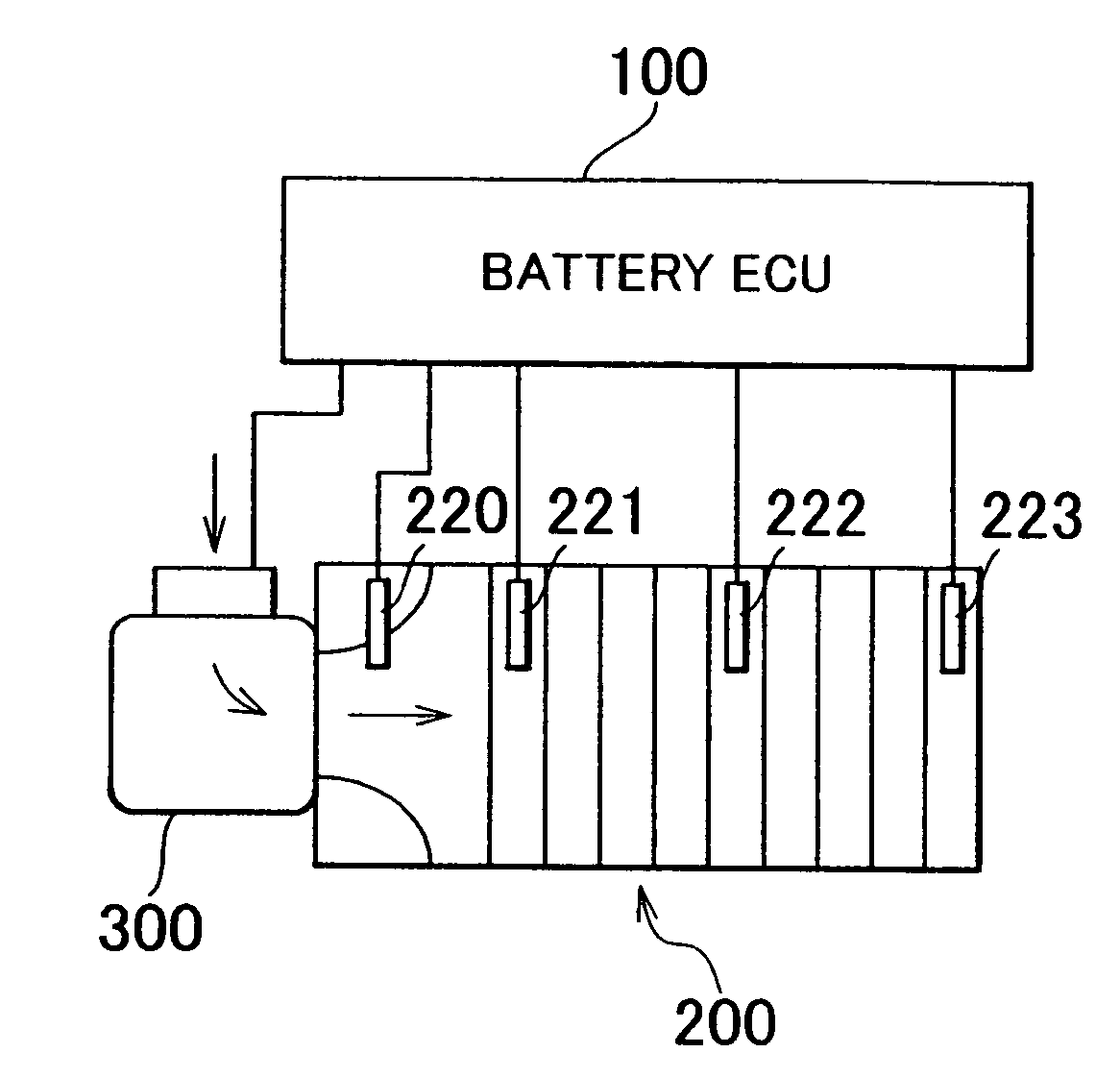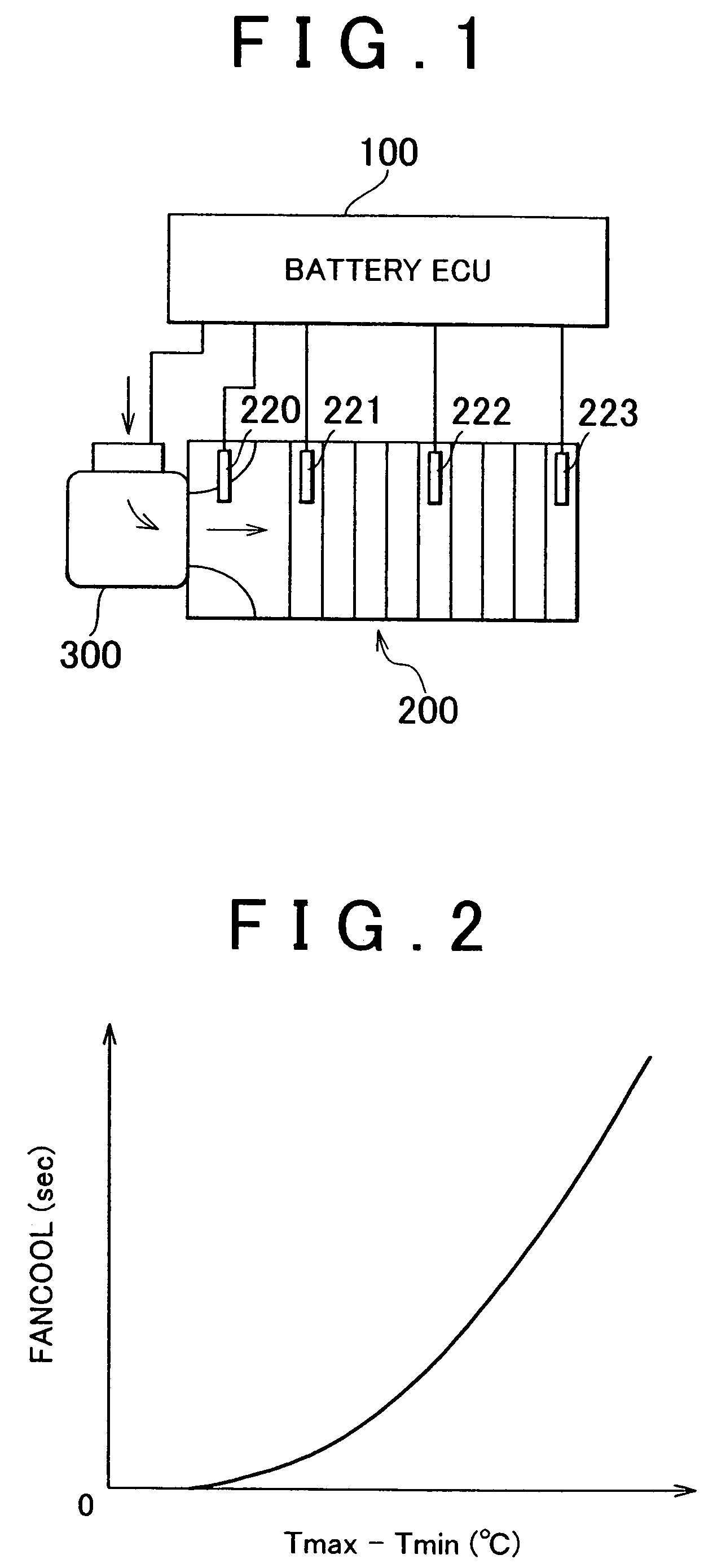Temperature abnormality detecting apparatus and method for secondary battery
a secondary battery and temperature abnormality detection technology, which is applied in the field of secondary batteries, can solve the problems of difficult detection of temperature abnormality in the battery from the detected battery pack temperature, abnormal temperature of parts of the battery, and difficulty in accurately detecting a temperature abnormality in the battery pack. , to achieve the effect of simple structure and accurate detection of temperature abnormality
- Summary
- Abstract
- Description
- Claims
- Application Information
AI Technical Summary
Benefits of technology
Problems solved by technology
Method used
Image
Examples
Embodiment Construction
[0037]In the following description and the accompanying drawings, the present invention will be described in more detail in terms of exemplary embodiments. In the description, like parts will be denoted by like reference numerals and referred to by the same nomenclature throughout. Redundant descriptions thereof will be omitted.
[0038]FIG. 1 is a block diagram of a battery cooling system according to one exemplary embodiment of the invention. As shown in the drawing, this cooling system includes a battery ECU (Electronic Control Unit) 100, a battery 200, and a cooling fan 300 which blows cooling air toward the battery 200. This cooling fan 300 may also draw the cooling air away from the battery 200.
[0039]The battery ECU 100 includes i) a CPU (Central Processing Unit) which executes a program and the like, to be described later, ii) memory for storing the program to be executed by the CPU as well as various threshold values and a map, to be described later, used in the program, iii) a...
PUM
 Login to View More
Login to View More Abstract
Description
Claims
Application Information
 Login to View More
Login to View More - R&D
- Intellectual Property
- Life Sciences
- Materials
- Tech Scout
- Unparalleled Data Quality
- Higher Quality Content
- 60% Fewer Hallucinations
Browse by: Latest US Patents, China's latest patents, Technical Efficacy Thesaurus, Application Domain, Technology Topic, Popular Technical Reports.
© 2025 PatSnap. All rights reserved.Legal|Privacy policy|Modern Slavery Act Transparency Statement|Sitemap|About US| Contact US: help@patsnap.com



